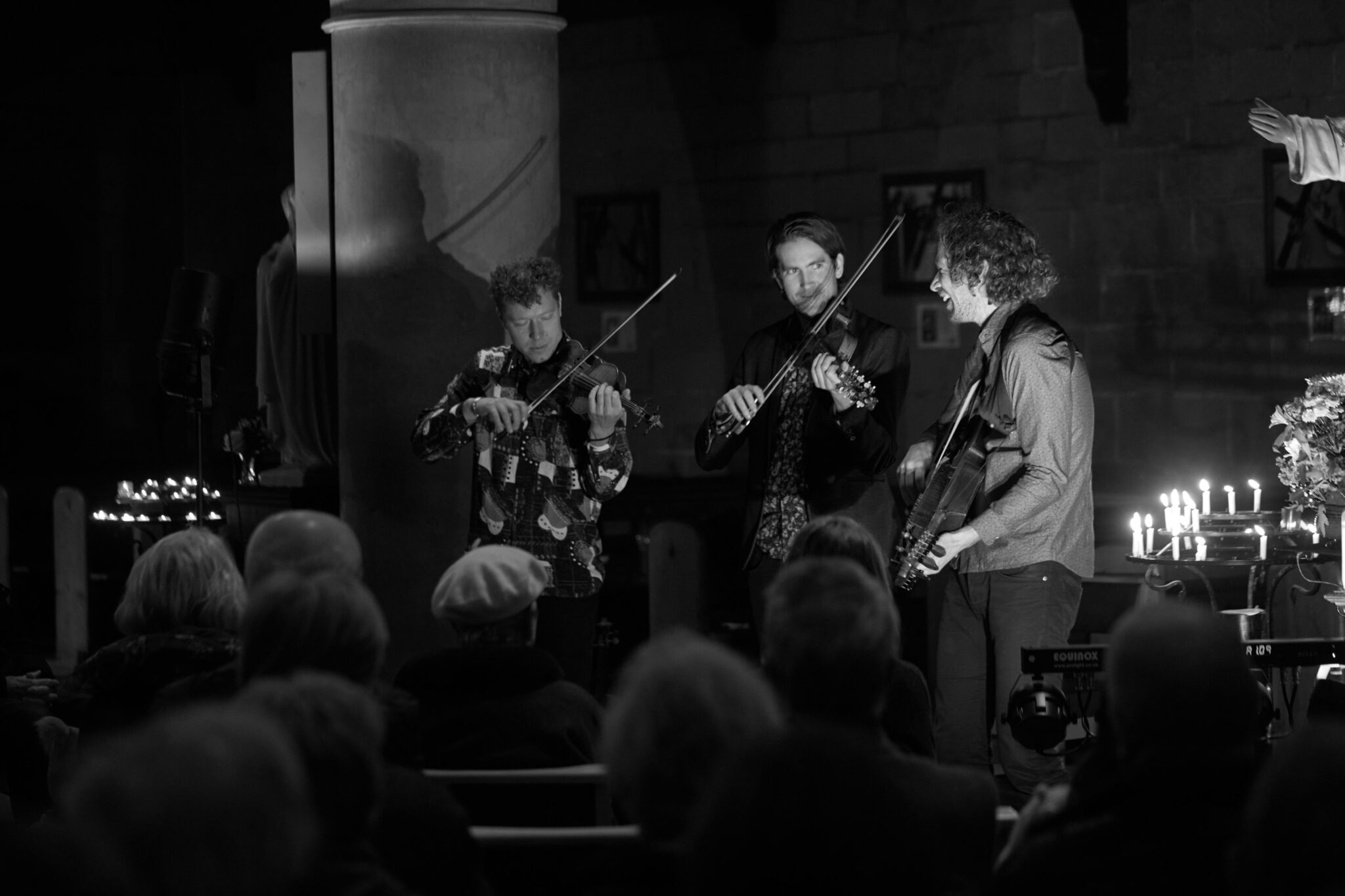Erik, Olav, and Max Show the Way Forward
Victoria Kingham in Hastings Independent Press meditates on the Lodestar Trio at Christ Church St Leonards
The Lodestar – guiding light, inspiration, Pole Star. The word is from Middle English. Middle English was strongly related to Old Norse. Old Norse was spoken by Vikings. Vikings inhabited Scandinavia and indeed England, until William The Conqueror, that is. 1066, and here we are in Hastings. The rest is tapestry, castles, and cookery.
Erik, Olav, and Max were brought together not by a star but by their own stardom. The advance of technological communications over the last twenty years has enabled unprecedented advances in musical collaboration and re-imagining. This supreme trio is fully representative of this – a kind of re-positioning of classical music, not just in the staid respectable middle England suburbs where nice people applaud politely and go back home to agreeable suppers and fine wines, but as a central genre to be joyfully embraced, learned from. Jazz has long been incorporated into music of the classical genre: composers have introduced jazz cadences and rhythms into their symphonies, concertos, preludes, and sonatas – Satie, Debussy, then more obviously Copeland, Gershwin, Bernstein. Many more have similarly incorporated folk music.
So although classical music has often transcended the barriers of form, it is only comparatively recently that the ‘genre’ has been opened up to a newly-receptive kind of audience. So it is that we can now hear erstwhile royal harpist, Catrin Finch, making beautiful music with virtuoso African Kora master Seckou Keita, or conversely Vikingur Olafsson playing Bach with notable imagination and originality, reaching out with rhythmic perfection to the farthest corners of the listening public. Olafsson, Icelandic genius, also a Viking, is interested in nurturing the roots and branches of Bach that reach into almost all music written in the Western world since.
So here we are, back to Bach and this Viking trio. Much of what they played in the church can be found on their album, Bach to Folk, which I thoroughly recommend. It’s beautiful. But very few albums can transmit the sheer love and delight that these three excellent musicians have in making music together, and their pleasure in offering it to listeners. Erik Rydvall plays an extraordinary instrument: the nyckelharpa, a quintessential Swedish folk instrument dating from the 14th century. It looks like a cross between a violin and a hurdy-gurdy, and adds glorious drone and resonance to every piece – very much in evidence in Baillie’s own Rolling to Røros.
Røros is the town where Olav Mjelva lives. Mjelva plays a traditional Norwegian instrument, the Hardanger fiddle (hardingfele), often tuned differently from a normal violin and played with a different technique. Read the Wikipedia entry for this instrument – it’s fascinating, full of myth, trolls and dragons. Nothing troll-like about Mjelva, though – like the other two musicians in the ensemble, he’s a clear musical force, and witty with it.
Baillie loves Bach, loves to explore the connections between Bach’s music and traditional folk music. With this trio he has the perfect vehicle. It’s one thing to know about the musical connections, quite another to present the connections to the audience at this level of internal blend, tuning, accomplishment, and panache. His own violin, made in 1845 by Jean-Baptiste Vuillaume in Paris, has a glorious tone – cinnamon and oranges, wood fires and furs. And for me, concerts without music stands mediating the transmission of the sound to the listeners are always the most rewarding.
The Lodestar has of course a whole other significance – it’s the star that, in the story, guides three kings to the cradle of Jesus. Whatever your belief system, it’s a good story, gold, frankincense, and myrrh. And here were three kings of their instruments, guided by who knows which star, making towards a rare interpretative freshness, a completely non-traditional way of presenting tradition.

